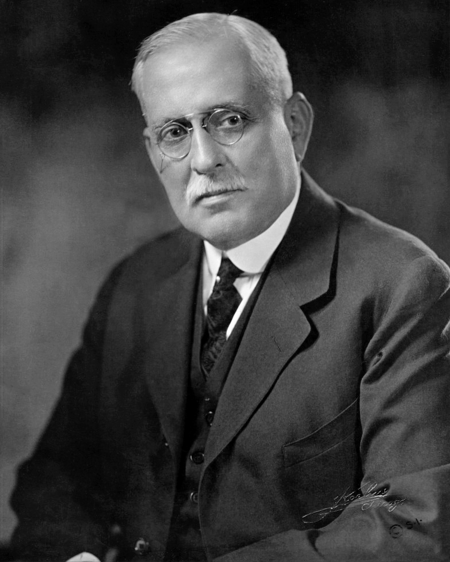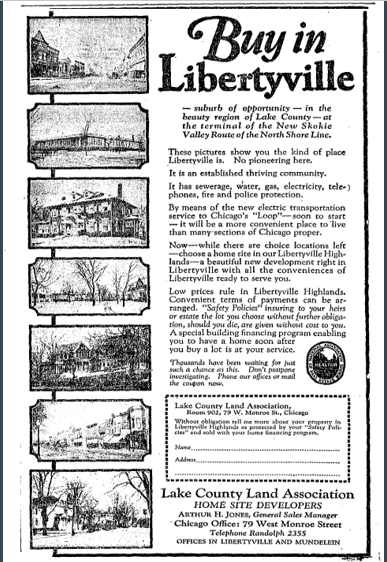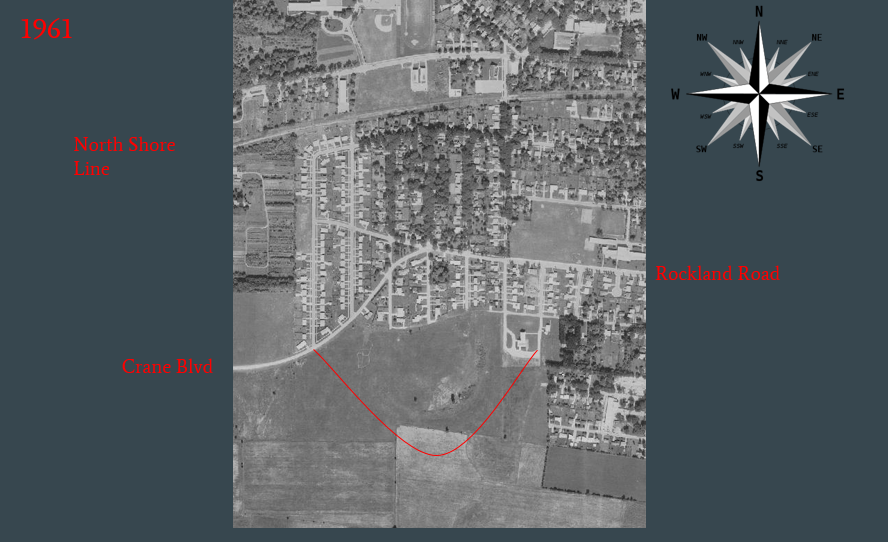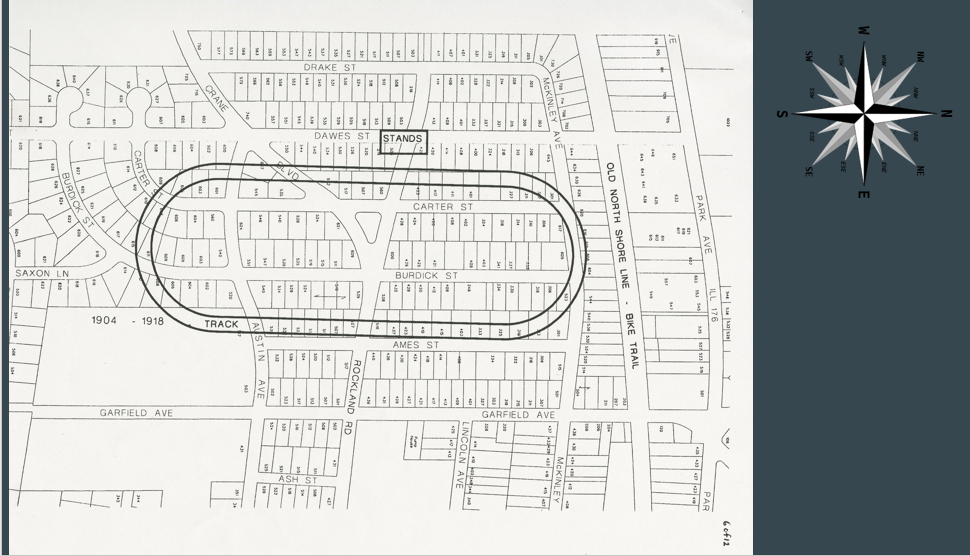It’s possible that the biggest race ever held at the One Mile track was not a horse race, but an automobile race.

The event took place in August 1913 and made headlines in the the Lake County Independent: “Biggest Race Carnival of Year at Libertyville,” “Speed Kings of Country to Race at Libertyville” and “World’s Famous Drivers to Race at the Track.” [1]

Louis Disbrow and Eddie Rickenbacker were the two stars of the Libertyville meet.

If Rickenbacker’s name sounds familiar, he went on to become a World War I flying ace who downed twenty-six enemy aircraft and returned home a decorated hero. Later he was the long-time head of Eastern Airlines.

The great contest was scheduled for August 9 & 10, 1913. The dirt track was oiled and other fast conditions met. Races were to be electrically timed so the results would be officially recognized by the American Automobile Association in the event of a new world record. There were nine events scheduled on each of the two days, including a highly anticipated 100-mile race. [2]

About 2,000 people attended the event and “occupied the old grandstand at the trotting track, which has remained unused for so many years.” [3] On August 9th, Rickenbacker won a heat in both the 10- and 5-mile races and clocked the best time in the mile dash. The August 10th races were cancelled due to rain. A wet track is just as bad for cars as it is for horses. Promoters moved the races to the following Sunday. [4]

The Chicago Tribune recorded the excitement on Sunday, August 17th, in the next day’s paper. This time it was Louis Disbrow with all the glory. “Five thousand persons saw the races which were the best ever held on a dirt track in the vicinity of Chicago. Rickenbacker and Disbrow, who bear no love for each other, were the stars of the meet…[Disbrow] jockeyed his opponent out of every chance to win [in the 10-mile race].” And according to the Lake County Independent, “Louis Disbrow’s Simplex Zip carried it’s owner to a world’s competition record in a sensational duel with Eddie Rickenbacker…in the 10-mile race.” There was no mention of the 100-mile race and we can only guess it was likely cancelled or unofficially run and not recorded. [5]
Just a few months after the race, Frank Just purchased the track for $25,000, just a fraction of the money spent to build the track less than 10 years earlier. [6] At the time, Just was owner of the Just Garage in Libertyville, seen below on the west side of Milwaukee Ave just south of Church Street [today’s Mickey Finn’s].

Over the next couple of years, plans to revive racing at the One Mile Track would pop up, but by 1918 the race track buildings were being dismantled and the scrap offered for sale. [7]

The long told story in Libertyville is that utilities magnate Samuel Insull, who lived locally at what is now known as the Cuneo estate, purchased the track in 1918 to shut it down due to his opposition to gambling.

The best guess at the original source of this information is a recording of a talk delivered to the Libertyville Historical Society by Samuel Insull Jr. in 1972.
Said Insull Jr. of his father: “He either bought or caused one of his corporations to buy, a racetrack [One Mile Track] which existed somewhere south of present 176 and east [west] of Milwaukee Avenue. The reason was that ultimately this track was used for automobile and motorcycle racing, and the type of crowd attracted from Chicago to that kind of an event in those days was a little bit on the rough side, and in claiming this my father thought up the fact to put it out of business. I understand it is now a subdivision [Libertyville Highlands].” [8]
However, property records do not show a sale until 1923. Whether or not Insull opposed gambling, it seems likely that the acreage was seen as a great real estate opportunity during the post-World War I suburban boom. In November 1923, the track property was purchased by Joseph Reuse, manager of Insull’s Hawthorn Farm, likely on Insull’s instruction. Reuse then transferred the property to the Lake County Land Association formed by Insull and his associates. [9]
The One Mile Track was subdivided and became the Libertyville Highlands neighborhood. A Chicago Tribune ad for the subdivision is below. Other Lake County Land Association subdivisions included Countryside Lake and Lakewood Heights, both in Mundelein. [10]

February 2, 1926, p. 6.
Although the Libertyville Highlands subdivision plat was accepted in January 1926, it was slow to develop and was hurt by the Depression. Most of the houses in that area were built after World War II, and even as late as 1961, the outline of the track could still be seen from above. (There is a light outline of the track just above the red arch in the image below.)

In 1999 a Libertyville Boy Scout mapped and marked the track for his Eagle Scout project. The track is overlaid on a current street map below. Today, an historic sign marks the heart of the track at Crane, Carter and Rockland roads. (That is the triangle of land near the center of the track.) As you walk along these streets today, take a moment to imagine the horses, motorcycles, and automobiles competing at high speed to the delight of the cheering crowd.

Part 1: Libertyville’s Racetracks
Part 2: Libertyville’s Racetracks
Many of the following sources used in this post can be found in the Cook Memorial Public Library District collection.
Sources
- “World’s Famous Drivers to Race at the Race Track.” Lake County Independent, July 25, 1913, p.7.; “Speed Kings of Country to Race at Libertyville.” Lake County Independent, August 1, 1913, p.6.; “Biggest Race Carnival of Year at Libertyville.” Lake County Independent, August 8, 1913 p.5.
- Ibid.
- “Wilbur Wins The 10 Mile Handicap Event Saturday.” Lake County Independent, August 15, 1913, p.1.
- Ibid.
- “Sets World Mark for Motor Race.” Chicago Tribune, August 18, 1913. p.1.
- “Libertyville Track, Costing $150,000, Sold for $25,000.” The Inter Ocean, November 14, 1913, p.13; “Just Buys Track.” Lake County Independent, November 13, 1913, p.1.
- “Chicago Men Get Libertyv’le Track If Measure Passes.” Libertyville Independent, January 4, 1917. p.10; “For Sale.” Libertyville Independent, October 3, 1918, p.5; “For Sale.” Libertyville Independent, October 31, 1918, p.5.
- Libertyville-Mundelein Historical Society;, Samuel Insull Part 1, Libertyville History (Illinois Digital Archives), 2023-06-14, http://www.idaillinois.org/digital/collection/cookmemo11/id/7777.
- Lake County Recorder of Deeds. Document No. 233410. Filed December 11, 1923; Lake County Recorder of Deeds. Document No. 236347/. Filed March 1, 1924.
- “New subdivision approved by Village Board Friday.” Libertyville Independent, December 3, 1925, p.1.; “Lake County Land Association Introduces Lake County Countryside to Chicagoans.” Real Estate News: Chicago, November 1925, p.7′ “Announce Big Development Project West of Mundelein.” Lake County Register, June 28, 1926, p.1.
Categories: Local History
Tags: Local History
